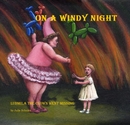Wednesday, September 2, 2015
The Priscilla Test
Painting in progress today.
Operation Plumbbob was a series of nuclear tests conducted between May 28 and October 7, 1957, at the Nevada Test Site. It was the biggest, longest, and most controversial test series in the continental United States.
On shot Priscilla (37 kt), 719 pigs were used in various experiments on Frenchman Flat. Some pigs were placed in elevated cages and provided with suits made of different materials, to test which materials provided best protection from the thermal radiation. The pigs survived, but with third-degree burns to 80% of their bodies. Other pigs were placed in pens behind large sheets of glass at measured distances from the hypocenter to test the effects of flying debris on living targets. Studies were conducted of radioactive contamination and fallout from a simulated accidental detonation of a weapon; and projects concerning earth motion, blast loading and neutron output were carried out.
Plumbbob released 58,300 kilocuries (2.16 EBq) of radioiodine (I-131) into the atmosphere. This produced total civilian radiation exposures amounting to 120 million person-rads of thyroid tissue exposure (about 32% of all exposure due to continental nuclear tests).
Statistically speaking, this level of exposure would be expected to eventually cause between 11,000 and 212,000 excess cases of thyroid cancer, leading to between 1,000 and 20,000 deaths.
In addition to civilian exposure, troop exercises conducted near the ground near shot Smoky exposed over three thousand servicemen to relatively high levels of radiation. A survey of these servicemen in 1980 found significantly elevated rates of leukemia.
Labels:
art,
history,
military history,
operation plumbbob,
painting,
priscilla test
Subscribe to:
Post Comments (Atom)










No comments:
Post a Comment